A lot of love—and money: Over-the-top restorations
Three airplanes restored to much better than new
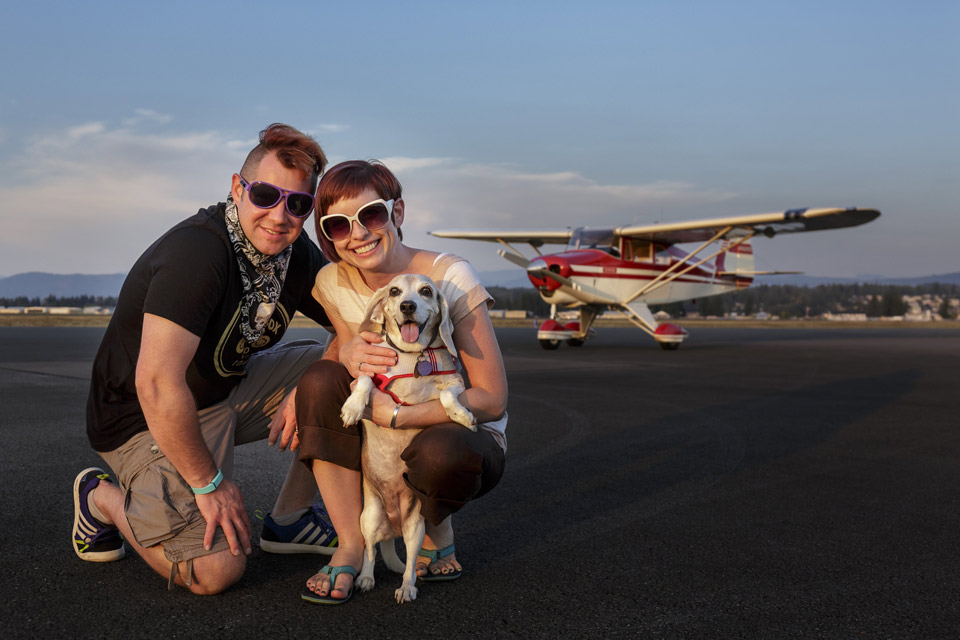
A Piper Tri-Pacer, Cessna 182, and Cessna 310 today are better than the factories ever imagined—thanks to owners who wanted their aircraft to be, as the U.S. Army says, all they can be. They succeeded.
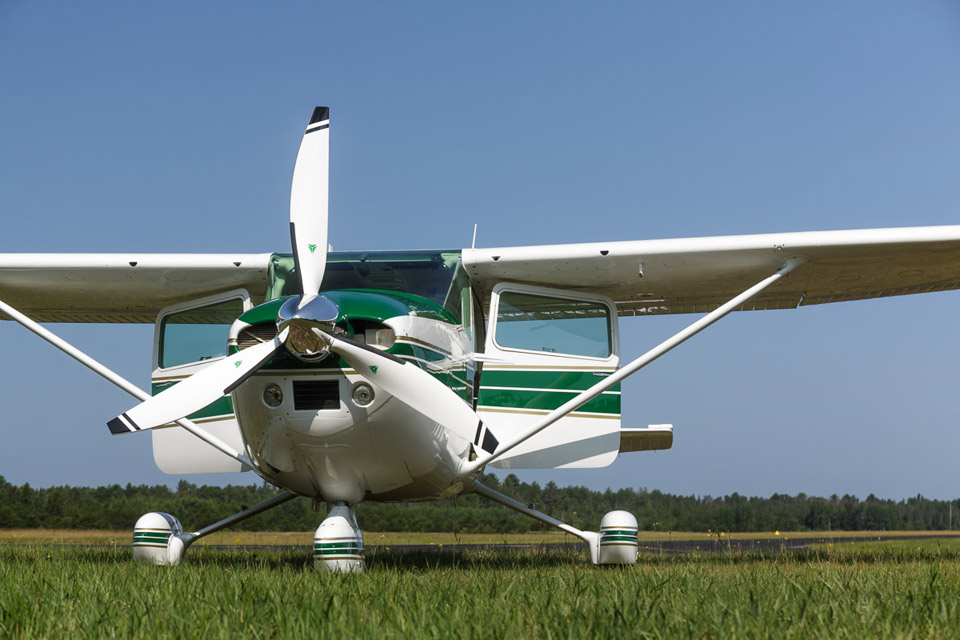
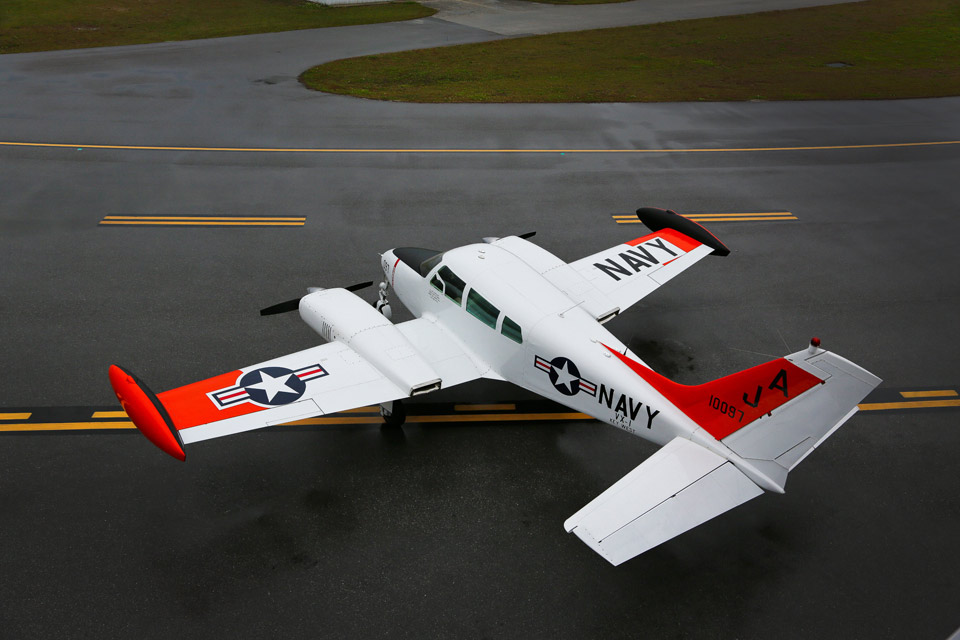
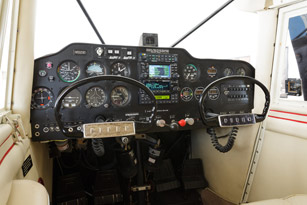
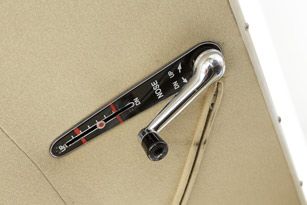
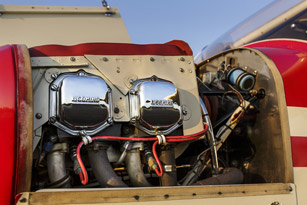
By the time Dave Sterling purchased the aircraft in 2010, most of the restoration had taken place. Work on the airframe and engine, plus the custom interior, was done between 1998 and 2004. He upgraded the Garmin GNS 430 navigation receiver (top) and added LED landing and taxi lights. The elevator trim crank on the ceiling was chromed but is mostly original.
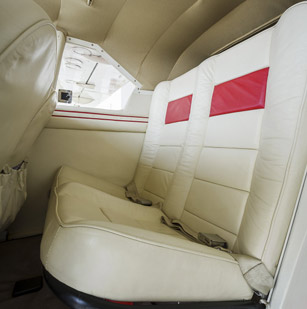 Much of the 1957 Piper Tri-Pacer restoration was done by a previous owner before Dave Sterling of Seattle, Washington, and wife Stacy found it. Sterling estimates from old receipts that the previous restoration totaled $100,000—the cost of three used Piper Tri-Pacers in excellent condition. Of course, he found ways to improve on it. Wayne Haub, owner of H&H Color Lab in Kansas City, Missouri, and the airplane’s former owner who ran up those old bills, says the estimate is correct. “There’s been a lot of love and money put into it,” he said.
Much of the 1957 Piper Tri-Pacer restoration was done by a previous owner before Dave Sterling of Seattle, Washington, and wife Stacy found it. Sterling estimates from old receipts that the previous restoration totaled $100,000—the cost of three used Piper Tri-Pacers in excellent condition. Of course, he found ways to improve on it. Wayne Haub, owner of H&H Color Lab in Kansas City, Missouri, and the airplane’s former owner who ran up those old bills, says the estimate is correct. “There’s been a lot of love and money put into it,” he said.
1957 Tri-Pacer
Key feature—Costs the same as three—actually four—Tri-Pacers in excellent condition
Extra comforts—Equipped like a home music room with a phone
“But of course, eventually you get the itch to do something more to your airplane.”
—Dave Sterling, Piper Tri-Pacer owner
Haub had the airplane stripped to the frame, then built up again with new fasteners and mostly new parts. Major upgrades included a rebuilt Lycoming O-320 engine, new propeller, custom interior, autopilot, and Garmin communication and navigation systems. By 2007 a new owner had bought it for about $60,000, then flew it to Oshkosh, where Sterling happened to see it. It wasn’t for sale, but he knew that was the kind of airplane he wanted.
Then came the recession and Sterling’s plan to own an airplane with Stacy was put on hold. When the airplane did come on the market in 2010, Sterling saw an advertisement for it, priced at $49,000, and thought it looked familiar. The registration number matched the one he had photographed in 2007. The price was steep so he waited for it to come down. When it reached $42,000 he called the broker, had it inspected by Rare Aircraft—a company that also restored the Waco given away as an AOPA sweepstakes airplane in 2003. The first year of ownership was spent getting familiar with the airplane and enjoying being an airplane owner.
“But of course, eventually you get the itch to do something more to your airplane,” Sterling said. He put in LED landing and taxi lights, as well as a PS Engineering PMA8000 Bluetooth audio panel that allows him to make phone calls, play music, and get audio alerts from the ForeFlight flight-planning system. He upgraded the Garmin GNS 430 navigation receiver with wide area augmentation system capabilities, and uses the system to fly on instruments in bad weather.
“The first response I get from people is that it is the prettiest Tri-Pacer they have ever seen,” Sterling said. “Then they walk around, look at the panel, look at me, and say, ‘You’ve got an autopilot, a Bluetooth audio panel, traffic alerts from your transponder…why?’” His response is, “Well, I just got lucky.” In 2012 the aircraft won a trophy for the best restoration of its type at EAA AirVenture.
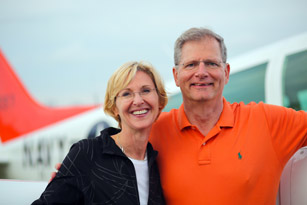
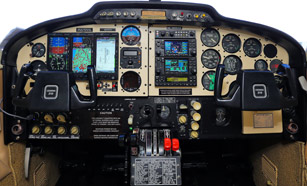
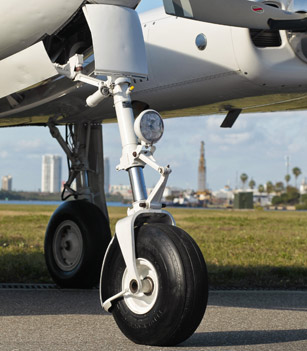
If Sky King’s Cessna 310 and this one were placed side by side, which one would win? With its slightly more powerful engines, Mary Ana and Butch Gilbert’s could catch crooks faster. Other advantages are modern avionics and a new interior. And with more lights, including a taxi light (top right), theirs has more bling. Advantage Navy Cessna 310.
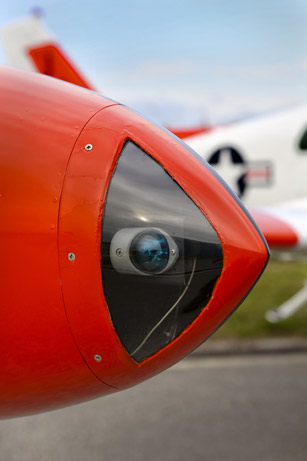 1961 Cessna 310F
1961 Cessna 310F
Key feature—Nearly new because of rejection by the U.S. Navy (now prefers U.S. Air Force pilots)
Extra comforts—Is everything Sky King’s Songbird was not
“We thought, it’s in the shop, let’s do it—do it exactly right, right at first.”—Mary Ana Gilbert, Cessna 310F owner
Cessna 310 relives military career
This 1961 Cessna 310F joined the U.S. Navy in Key West, Florida, as a U–3B at a time when the Navy was about to decide it didn’t want any more 310s. Forty-two years later, FedEx Capt. Harold “Butch” Gilbert of Tampa, Florida, saw it advertised on the bulletin board at the company’s Memphis hub during a stop in his Boeing 757, but wasn’t looking for an aircraft in military livery.
When he got home, the former U.S. Air Force pilot discussed it with his wife, Mary Ana Gilbert, a former Air Force pilot and Delta first officer who is rated in the Boeing 757/767. There were lots of reasons why the discussion resulted in a purchase, including these three: she wanted a twin for cabin roominess, speed, safety and payload; the 310 would fit in their hangar, then occupied by a Mooney; and, like the couple, it had a military flying background. That last point also means the 310 came with stainless-steel control cables, onboard oxygen, and corrosion proofing. They replaced fuel lines, oil lines, and magnetos when they bought it in May 2013.
The Gilberts named it Navy Songbird, similar to the earlier-model 310 flown in the television series Sky King that was still in reruns in 1961 when their aircraft was built. “We knew we wanted to do an updated panel that would have flat-panel capability, but it did not have an autopilot,” Mary Ana recalled. “We knew we wanted that, especially for the missions that we wanted to fly. Then it was, ‘Well, the seats need to be replaced, so should we go ahead and do the whole thing? We thought, it’s in the shop, let’s do it—do it exactly right, right at first.”
Besides an Aspen Avionics Evolution 2500 navigation suite with XM satellite weather, they added an S-Tec System 50 autopilot linked to a Garmin GNS 430 communication, navigation, and GPS receiver; a J.P. Instruments EDM 760 engine monitor; and a Garmin GTX 330 transponder with air traffic information. An upgrade allows the transponder to automatically report velocity, climbs and descents, and heading information. They also restored the factory-installed oxygen system.
They bought the airplane for $50,000, but sold the Mooney for a little bit more. Engine improvements ran $20,000, while the interior and panel upgrade totaled $80,000. Now, it is a $150,000 airplane. The value on today’s market, Butch estimates, is $40,000 to $70,000, but they are not too far upside down. “The right buyer who wants the military heritage would probably pay north of $100,000 to get the airplane,” he said. The aircraft has 1,395 original hours
Don’t bother making an offer. When the couple retires, they plan to take a few months and hopscotch their way to Alaska, stopping as they please along the route.
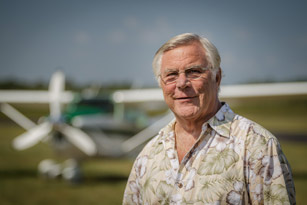
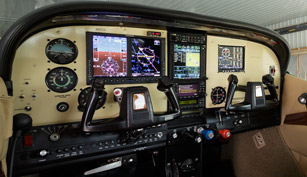
George Stephen wanted to make sure this Cessna 182 was the one he had always dreamed about. He used the same interior shop as the 2011 AOPA Crossover Classic sweepstakes—Air Mod of Batavia, Ohio.
1979 Cessna 182Q
Key feature—In competition as world’s best 182
Extra comforts—Climbs like it is frightened of the ground
“Anybody who has seen the plane, including Phil Boyer [former AOPA president], is just amazed at how nice it is.”—George A. Stephen, Cessna 182 owner
The best 182 out there
George A. Stephen of Wisconsin found a one-owner original 1979 Cessna 182—no damage history—and made it his special project, the ultimate 182. “This will be my third or fourth 182, and I have decided this will probably be my last 182, and I wanted to really do a super job on it. I modeled a lot of what I did on the Crossover Classic,” Stephen said of AOPA’s 2011 sweepstakes airplane. His dad invented the Weber grill and he spent his entire career at that factory.
Stephen didn’t provide the amount spent on the restoration, but he knows he is “way upside down.” He had the interior done by Dennis Wolter’s Air Mod in Batavia, Ohio, the same shop that did AOPA’s 182 sweepstakes aircraft (and several others over the years). “Dennis did just an unbelievable job on this plane,” Stephen said. He thinks it will great for commuting to his winter home in Florida.
The 182Q cruises at 150 to 155 knots true airspeed using only 70 percent power. “Climb performance is pretty spectacular,” he said, averaging 1,700 feet per minute. “You are going from a 230-horsepower engine to a 285-horsepower engine and a three-blade MT composite prop. The modification was by Texas Skyways [in Boerne, Texas],” he said.
In the panel he has three Garmin systems for navigation, communication, and GPS reception, including the touchscreen Garmin GTN 750 with traffic information and the Garmin G500 glass cockpit system with synthetic vision. There’s also a Garmin GNS 430W. An L-3 Avionics Systems WX-500 lets him know where storms are located. The upgrades were done by Superior Aviation at Iron Mountain, Michigan.
“Anybody who has seen the plane, including Phil Boyer [former AOPA president], is just amazed at how nice it is,” Stephen said. Another admirer was stunned into silence. “I recently bought an American Champion High Country Explorer, and the guy that came over [to deliver it] saw my 182 and took a ride in it. He couldn’t say anything.”
Email [email protected]



